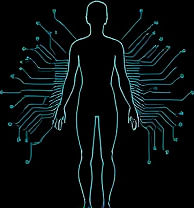Circadian Light Therapy: A Path to Enhanced Well-Being
 by Marlene Keeling
by Marlene Keeling
Circadian light therapy uses specific light exposures to align your body's internal clock, improving sleep and daily energy. This approach draws from biohacking principles to boost cognitive function and overall health, making it ideal for those seeking self-improvement through science-based methods.

Circadian light therapy involves using controlled light to influence the body's natural rhythms, offering a way to fine-tune daily routines for better health. This method helps regulate sleep patterns and vitality by mimicking natural daylight cycles.
One key aspect of circadian light therapy is its ability to reset the internal body clock. For instance, exposure to bright light in the morning can signal wakefulness, while dimmer light in the evening promotes rest. This simple adjustment leads to noticeable improvements in alertness and mood.
In the field of health optimization, this therapy stands out as a practical tool. By aligning light exposure with biological needs, individuals report better focus and reduced fatigue during the day. Wearable devices often track light levels, providing data to refine these practices.
Consider how light affects hormone production. Morning light helps increase cortisol levels, which supports energy throughout the day. Evening light, kept low, aids in melatonin release for quality sleep. These changes can transform routines for those passionate about personal enhancement.
Benefits for Daily Life
Many people integrate light therapy into their wellness routines. It enhances cognitive performance by maintaining steady energy levels, which is crucial for tech enthusiasts managing demanding schedules. Studies show consistent use can lead to fewer disruptions in sleep cycles.
For example, using specialized lamps that emit blue light in the morning supports mental clarity. Over time, this practice builds resilience against stress and improves overall productivity. The results make it a favorite among wellness seekers.
Integrating with Technology
Wearable technology plays a significant role here. Devices that monitor light exposure offer insights into daily patterns, allowing users to make informed adjustments. This integration turns biohacking into an accessible activity, where data drives decisions for better health.
Through apps connected to these wearables, individuals can set reminders for optimal light times. This level of personalization ensures the therapy fits seamlessly into modern lifestyles, fostering a sense of control over well-being.
Practical Tips for Getting Started
To begin with circadian light therapy, start by assessing your environment. Ensure morning spaces have ample natural light or use artificial sources that simulate daylight. In the evening, opt for warmer, softer lighting to ease into rest.
Experimenting with duration and intensity is key. A 30-minute session of bright light upon waking can set a positive tone for the day. Combine this with other health practices, like balanced nutrition, for compounded effects.
Those interested in nootropics might find that pairing light therapy with cognitive supplements amplifies benefits. For instance, certain natural compounds support brain function when used alongside regulated light exposure, creating a holistic approach to enhancement.
Long-Term Gains
Over weeks of consistent application, users often experience sustained improvements. Better sleep leads to sharper decision-making and increased motivation. This therapy encourages a proactive stance on health, inspiring ongoing exploration of self-improvement tools.
In summary, circadian light therapy offers a straightforward yet effective way to optimize daily rhythms. By focusing on light's role in biology, individuals can achieve greater balance and vitality, making it a cornerstone of modern biohacking.
